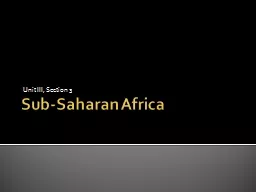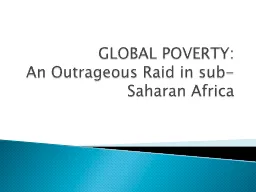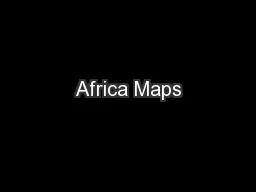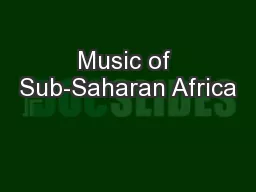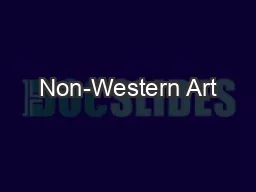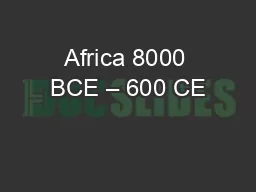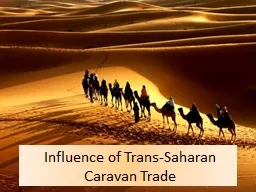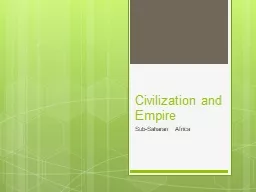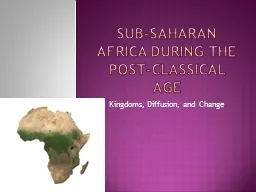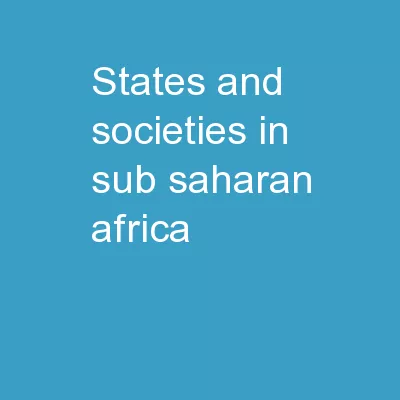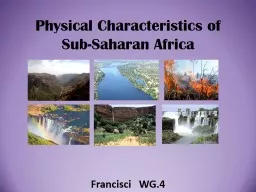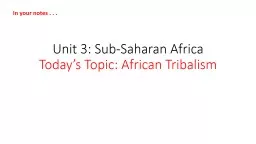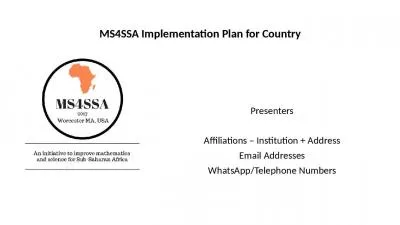PPT-Sub-Saharan Africa
Author : celsa-spraggs | Published Date : 2017-05-11
Unit III Section 3 Objectives Understand the complex and varying climate regions and resource deposits across the continent Define the influence left by other cultures
Presentation Embed Code
Download Presentation
Download Presentation The PPT/PDF document "Sub-Saharan Africa" is the property of its rightful owner. Permission is granted to download and print the materials on this website for personal, non-commercial use only, and to display it on your personal computer provided you do not modify the materials and that you retain all copyright notices contained in the materials. By downloading content from our website, you accept the terms of this agreement.
Sub-Saharan Africa: Transcript
Download Rules Of Document
"Sub-Saharan Africa"The content belongs to its owner. You may download and print it for personal use, without modification, and keep all copyright notices. By downloading, you agree to these terms.
Related Documents

